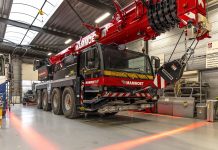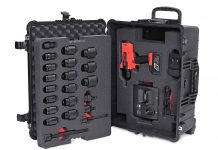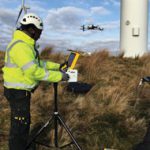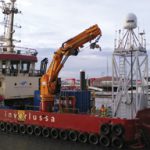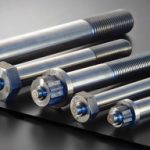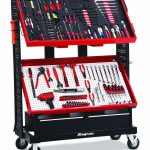Wind turbine fires scare the heck out of me and should scare you, too.
Since modern turbines don’t have ladders both inside and outside the turbine, there is only one way in and out of the nacelles. If you are caught up tower when there is a fire, you had best be prepared. That means that you should have your climbing gear on, and are able to self-rescue yourself off the nacelle.
I hear that techs today regularly leave their climbing gear on the yaw deck of the tower and continue work in the nacelle space without it. In the event of an emergency descent off the top of the tower, these techs will have to access the yaw deck, don their gear, climb back up to the nacelle, then leave the nacelle with their rescue device.
That seems improbable to me. Given an emergency in which I was able to make it to the yaw deck, I think I would continue to climb down the turbine’s tower ladder. I don’t think I would go down and then back up and over the edge. The only way I would go over the edge with a self-rescue device would be during an emergency in which I couldn’t access the yaw deck. If techs are removing their fall protection when working in the nacelle, they should at the very least place the gear near the tower rescue device. Me? I’ll just leave my gear on and keep my rescue device near me.
It’s kind of like playing baseball. You have to plan in advance what you will do if the ball is hit your way. On turbines, you have to plan for the worst. Don’t get stuck in a horrible situation and then make it worse by not being prepared.
Turbine fires in wind turbines are one of the most terrifying scenarios a wind tech could face. A fire extinguisher might help in this situation; then again, it might not. Probably the most fire-safe turbines today are manufactured by Siemens. This is because most of its nacelles are made of steel. Most all other manufactures use fiberglass composites. For those of you who don’t know, fiberglass composite nacelles consist of glass fiber and usually a polyester or vinyl ester resin. (This composite material is used quite extensively in wind, with most blades built today using some variant during the manufacturing process.)
I imagine that most turbine nacelle fires start with an electrical problem in which an arc flash occurs. The temperature of an arc flash can be over 19,000 C (35,000 F)—almost 3.5 times as hot as the surface of the sun. This high temperature is able to vaporize metals and everything else nearby instantaneously. When an arc flash happens in a steel nacelle, it can burn a hole through the nacelle, but the metal typically will not support continued combustion and would burn out.
This is not the case in a fiberglass composite nacelle. When an arc flash happens in a fiberglass nacelle, the resin in the fiberglass nacelle can start to burn. Once the resin in the fiberglass catches fire, the resin typically can support continued combustion. The resin will continue to burn as a fuel. This is probably why when a wind turbine catches fire it continues to burn until almost all of the nacelles resin is burnt up. You will find piles of ash and unconsumed fiberglass material left over.
This is why you see photos of complete nacelles burned away. The resin is so good at burning that parts of the rotating rotor also catch fire. The heat is so intense that metal components melt. You can burn the blades away too. The glass may melt at the point of the arc flash but it typically doesn’t burn.
However, a fire in the nacelle doesn’t have to mean the end of the turbine. There are ways to make composite nacelles more fire-resistant. This could be done at the turbine manufacturing plant, but so far manufacturers have not made this a priority. This means that you must plan ahead and take these preventative actions on site.
In the past, I have used intumescent coatings on the interior of blades containing electrical equipment. This intumescent coating helps prevent the resin component in the fiberglass from igniting, and also helps extinguish any fire that may be in progress.
Many independent service providers (such as my employer) offer solutions in which they coat the inside and outside of your composite nacelles and blades with a fire resistant coating. There are many of these types of specialized coatings available today. A little research will help you understand the differences among the available coatings, and can guide you in selecting the best option(s) for your wind turbine fleet.
Compared to the potential loss of life and considerable monetary losses (damaged or destroyed nacelle, blades, and other components) resulting from a turbine fire, these coatings are not that expensive. Using these coatings would help contain the nacelle damage to the fire’s point of origin, and would allow an area damaged by arc flash to be repaired.
I hope you consider this information for the health and safety of your turbines and your technicians. As always, work as safely as possible, and work to prevent surprises.
















